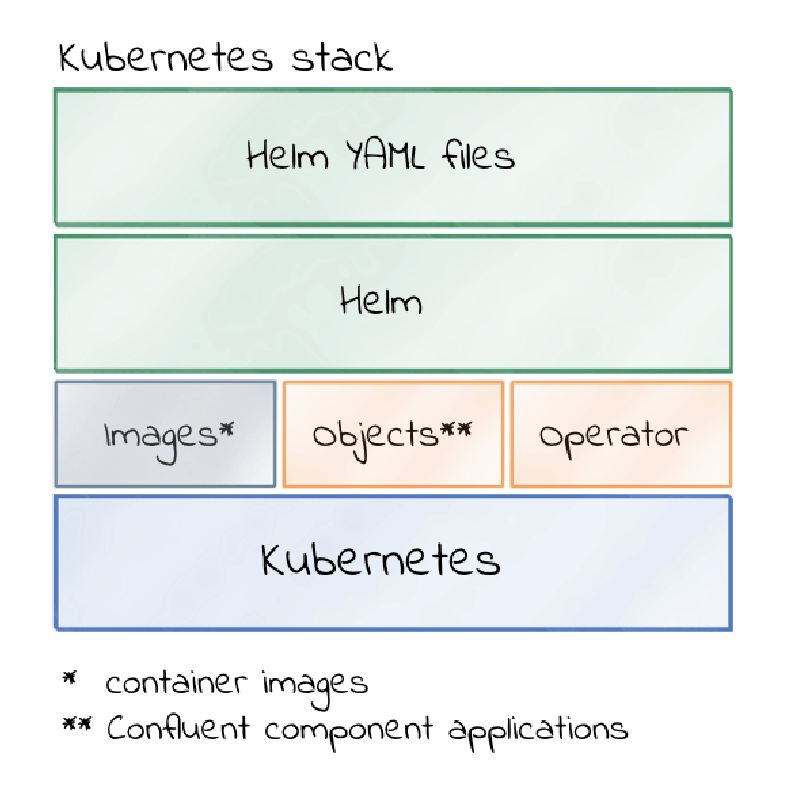What is Helm
git
Helm is a tool for managing Charts. Charts are packages of pre-configured Kubernetes resources.
Helm - apt
Charts - debian package
package manager
templating engine
release manager
Helm concepts
Helm is organized around several key concepts:
A chart is a package of pre-configured Kubernetes resources
A release is a specific instance of a chart which has been deployed to the cluster using Helm
A repository is a group of published charts which can be made available to others
Helm components(helm2)
- Helm Client - allows developers to create new charts, manage chart repositories, and interact with the tiller server.
- Tiller Server - runs inside the Kubernetes cluster. Interacts with Helm client, and translates chart definitions and configuration to Kubernetes API commands. Tiller combines a chart and its configuration to build a release. Tiller is also responsible for upgrading charts, or uninstalling and deleting them from the Kubernetes cluster.
Helm in Kubernetes
 (°0°)
(°0°)

what-the-helm
├── Chart.yaml
├── charts
├── templates
│ ├── NOTES.txt
│ ├── _helpers.tpl
│ ├── deployment.yaml
│ ├── ingress.yaml
│ ├── service.yaml
│ └── tests
│ └── test-connection.yaml
└── values.yaml
Chart.yaml - the metadata for your Helm Chart.
values.yaml - values that can be used as variables in your templates.
templates/*.yaml - Example Kubernetes manifests.
_helpers.tpl - helper functions that can be used inside the templates.
templates/NOTES.txt - templated notes that are displayed on Chart install.
helm install --values=my-values.yaml <chartname>
helm install --set version=2.0.0
Helm chart testing(WIP)
Helm chart production
Release Management
- helm install
- helm upgrade
--> changes are applied to existing deployment instead of creating a new one - helm rollback
--> handling rollbacks
Helmfile
repo
a helm for helm, helmfile is used to deploy collections of charts.
helmfile.yaml is a declarative configuration file that makes it easier to deploy and manage a large number of helm charts.
root
├── environments
│ ├── commons.yaml
│ │
│ ├── development
│ │ ├── charts.yaml
│ │ ├── kafka.yaml
│ │ ├── magic-ns.yaml
│ │ ├── nginx-ingress-internal.yaml
│ │ ├── nginx-ingress-public.yaml
│ │ └── zookeeper.yaml
│ │
│ └── staging
│ ├── charts.yaml
│ ├── magic-ns.yaml.gotmpl
│ ├── nginx-ingress-internal.yaml.gotmpl
│ └── nginx-ingress-public.yaml.gotmpl
│
└── helmfile.d - Read about single directory
├── 00-init.yaml
├── 01-infra.yaml
├── 02-db.yaml
├── 03-backend.yaml
└── 04-data.yaml
helm secrets
- helm plugin https://github.com/futuresimple/helm-secrets
- PGP to generate key pair(read from vault)
- create .sops.yaml with fingerprint
creation_rules: -pgp:"9B08 DC57 18C3 8BA1 160D EE53 4115 C1D9 D94B D9B2" - create a file secrets and encrypt
helm secrets enc secrets.yaml - decrypt
helm secrets dec values.yamlspinnaker access
- spinnaker is running on a k8s cluster
- other clusters kubeconfig are stored in that cluster as secrets, or using S3 on cloud
kubectl create secret generic --from-file=$HOME/.kube/config my-kubeconfig kubeConfig: enabled: true secretName: my-kubeconfig secretKey: config contexts: # Names of contexts available in the uploaded kubeconfig - my-context # This is the context from the list above that you would like # to deploy Spinnaker itself to. deploymentContext: my-contextHalyard BOM
- Spinnaker uses a Bill of Materials to describe the services that are part of a release.
- Halyard is a tool for configuring, installing, and updating Spinnaker, similar to helm
├── bom-yaml-1.19.4.tar.gz ## bom yaml files ├── halyard.sh ## halyard init script ├── halyard.yaml ## halyard config ├── ingress.yaml ## spinnaker ingress └── install.sh ## install
vs kustomize
Kustomize Helm
Method of operation overlays templating
Ease of use simple complex
Support for packaging no yes
Native kubectl integration yes no
Declarative/ imperative declarative imperative